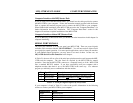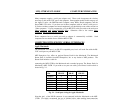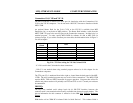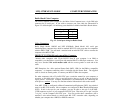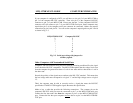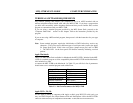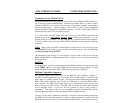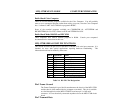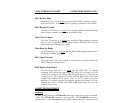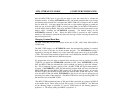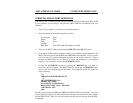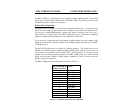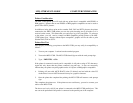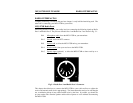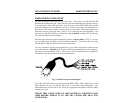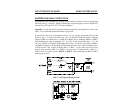
MFJ-1278B MULTI-MODE COMPUTER INTERFACING
Pin 3 Receive Data
The Receive Data pin is an output line from the MFJ-1278B on which the attached
device receives data. The attached device is generally a computer or data terminal.
Pin 4 Request To Send
The Request To Send pin is an input line to the MFJ-1278B on which the attached
device requests clearance to transmit data to the MFJ-1278B.
Pin 5 Clear To Send
The Clear To Send pin is an output from the MFJ-1278B signaling the attached
device to send or refrain from sending data to the MFJ-1278B. This line is used for
systems that require hardware flow control.
Pin 6 Data Set Ready
The Data Set Ready pin is an output from the MFJ-1278B telling the attached device
that the MFJ-1278B is operational.
Pin 7 Signal Ground
The Signal Ground pin is the common or return path for all signals between the
MFJ-1278B and the attached device.
Pin 8 Data Carrier Detect
The Data Carrier Detect pin is an output from the MFJ-1278B. As normally
configured, DCD reflects the status of the CON LED: It is true when an AX.25
connection exists between your MFJ-1278B and another station; it is false when no
connection exists. This configuration is useful when the MFJ-1278B is used with a
telephone style Bulletin Board system. Since the AX.25 protocol connection,
analogous to a modem signal on the telephone, indicates the presence of a user.
Shorting pins 1 and 2 of JMP1 on the MFJ-1278B mother board will cause this
output to always be true.
COMPUTER BAUD RATE
Autobaud
The MFJ-1278B performs an AUTOBAUD routine upon each power on cycle of the MFJ-
1278B. The AUTOBAUD command is user selectable. The AUTOBAUD command is
defaulted to ON. When
AUTOBAUD
is ON, MFJ
-
1278B will attempt to synchronize itself



